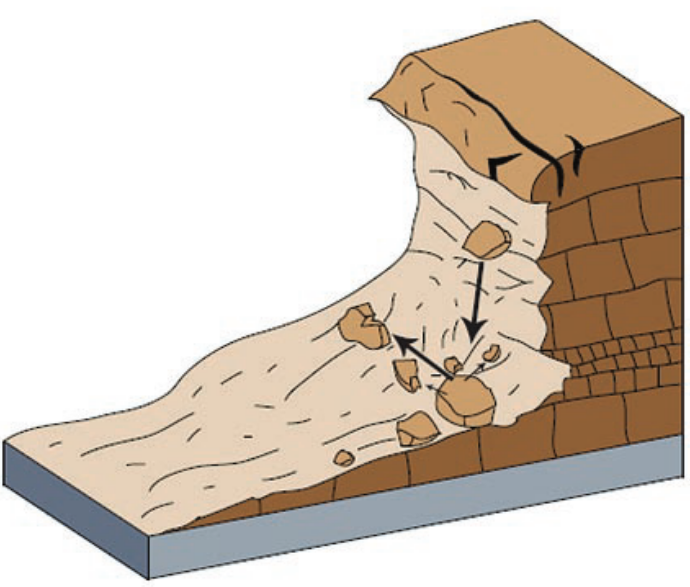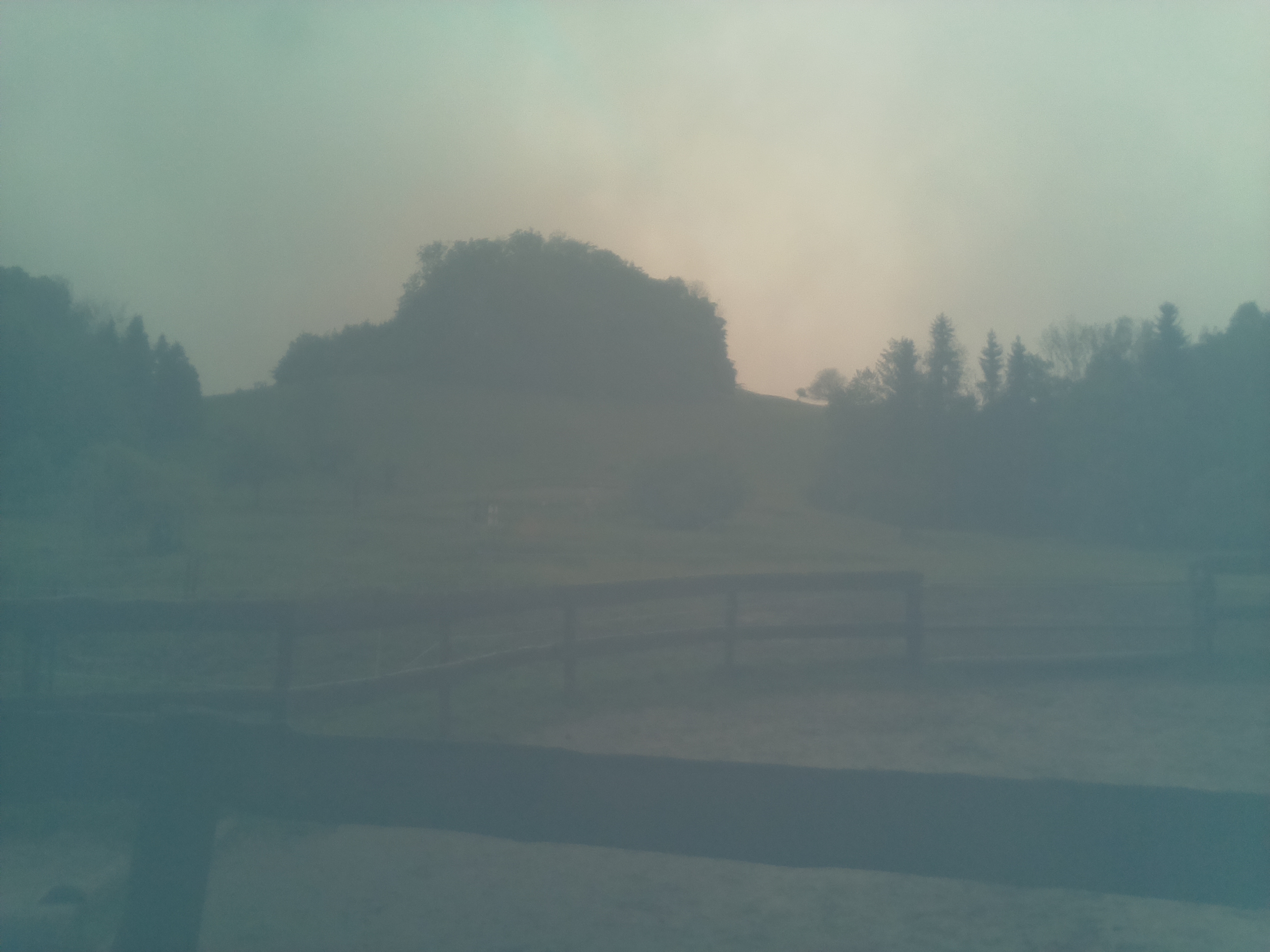According to Cruden and Varnes (1996), a rockfall is a type of landslide characterized by the sudden detachment and freefall of rock fragments from a steep slope or cliff (Figure 3). This process occurs when a block of rock becomes destabilized and moves rapidly under the influence of gravity, often bouncing or rolling downslope upon impact. Rockfalls are among the fastest types of mass movements, with velocities exceeding 300 km/h, posing a severe threat to infrastructure, transportation networks, and human lives.
Rockfalls can occur due to the combination of various preparatory and triggering factors, including weathering and erosion of rock due to thermal expansion and chemical weathering of rock masses, presence of structural discontinuities (such as pre-existing fractures or joints) or hydrological changes due to water infiltration. The trajectory of a rockfall depends on factors such as rock shape, slope angle, surface roughness, and vegetation cover. Some rockfalls remain small-scale events, while others can develop into catastrophic failures, impacting roads, settlements, and infrastructure.
Within the NoeSLIDE project, falling processes along the “Ofenlochstrasse” and at the “Amtmann” locations are being investigated.
Figure 3: Schematic illustration of a rockfall process (Source: Highland & Bobrowsky, 2008).
← Slides
Literature
Cruden, D. M. & D. J. Varnes. 1996. Landslide types and processes. In Landslides: investigation and mitigation, eds. A. K. Turner & R. L. Schuster, 36-75. Washington, D.C.: National Academey Press.
Highland, L. & Bobrowsky, P.T., 2008. The landslide handbook: a guide to understanding landslides, US Geological Survey Reston, VA, USA.




